- Clone
- SA011F11 (See other available formats)
- Regulatory Status
- RUO
- Other Names
- Chemokine (C-X3-C motif) receptor 1, Fractalkine receptor, GPR13, CCRL1, CMKBRL1, CMKDR1, V28
- Isotype
- Mouse IgG2a, κ
- Ave. Rating
- Submit a Review
- Product Citations
- publications
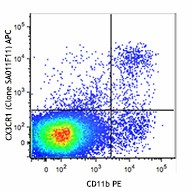
-

C57BL/6 mouse splenocytes were stained with CD11b PE and CX3CR1 (clone SA011F11) APC (top) or mouse IgG2a, κ APC isotype control (bottom). -

| Cat # | Size | Price | Quantity Check Availability | Save | ||
|---|---|---|---|---|---|---|
| 149007 | 25 µg | 120€ | ||||
| 149008 | 100 µg | 290€ | ||||
CX3CR1 is a 40 kD, G-protein coupled receptor, with seven transmembrane regions. CX3CR1 is expressed by resident and alternatively activated macrophages (M2), a subset of monocytes, dendritic cells (DCs), NK cells, a subset of memory T cells, and mast cells. CX3CR1 is involved in cell recruitment during inflammation and participates in cell adhesion and extravasation from blood vessels. Its ligand is CX3CL1, also known as fractalkine or neurotactin. CX3CR1 is also a coreceptor for HIV1 and variations in this gene leads to increased susceptibility to HIV. In the brain, it is expressed by glial cells, which interact with CX3CL1 expressed by neurons.
Product DetailsProduct Details
- Verified Reactivity
- Mouse
- Antibody Type
- Monoclonal
- Host Species
- Mouse
- Immunogen
- Mouse CX3CR1-transfected cells
- Formulation
- Phosphate-buffered solution, pH 7.2, containing 0.09% sodium azide; may contain stabilizer.
- Preparation
- The antibody was purified by affinity chromatography and conjugated with APC under optimal conditions.
- Concentration
- 0.2 mg/ml
- Storage & Handling
- The antibody solution should be stored undiluted between 2°C and 8°C, and protected from prolonged exposure to light. Do not freeze.
- Application
-
FC - Quality tested
- Recommended Usage
-
Each lot of this antibody is quality control tested by immunofluorescent staining with flow cytometric analysis. For flow cytometric staining, the suggested use of this reagent is ≤0.06 µg per million cells in 100 µl volume. It is recommended that the reagent be titrated for optimal performance for each application.
- Excitation Laser
-
Red Laser (633 nm)
- Application Notes
-
View more applications data for a different format of this clone in our Scientific Poster Library.
- Additional Product Notes
-
View more applications data for this product in our Scientific Poster Library.
- Product Citations
-
- RRID
-
AB_2564491 (BioLegend Cat. No. 149007)
AB_2564491 (BioLegend Cat. No. 149008)
Antigen Details
- Structure
- G-protein coupled receptor, 7 transmembrane regions, 40 kD.
- Distribution
-
Resident and alternatively activated macrophages (M2), subset of monocytes, dendritic cells (DCs), natural killer cells (NK), subset of memory T cells, mast cells, glial cells, and astrocytes.
- Function
- Involved in cell recruitment during inflammation, participates in cell adhesion and extravasation from blood vessels, coreceptor for HIV1.
- Ligand/Receptor
- CX3CL1 (fractalkine, neurotactin).
- Cell Type
- Astrocytes, Dendritic cells, Macrophages, Mast cells, Microglia, Monocytes, NK cells, T cells
- Biology Area
- Cell Adhesion, Cell Biology, Immunology, Innate Immunity, Neuroscience, Neuroscience Cell Markers
- Molecular Family
- Cytokine/Chemokine Receptors, GPCR
- Antigen References
-
1. Ponzetta A, et al. 2013. J. Immunol. 191:5684.
2. Jacquelin S, et al. 2013. Blood. 122:674.
3. Garcia JA, et al. 2013. J. Immunol. 191:1063.
4. Lee YS, et al. 2013. Cell. 153:413.
5. Shechter R, et al. 2013. Immunity. 38:555. - Gene ID
- 13051 View all products for this Gene ID
- UniProt
- View information about CX3CR1 on UniProt.org
Related FAQs
Other Formats
View All CX3CR1 Reagents Request Custom ConjugationCustomers Also Purchased
Compare Data Across All Formats
This data display is provided for general comparisons between formats.
Your actual data may vary due to variations in samples, target cells, instruments and their settings, staining conditions, and other factors.
If you need assistance with selecting the best format contact our expert technical support team.
-
Purified anti-mouse CX3CR1

C57BL/6 mouse splenocytes were stained with CD11b APC and pu... 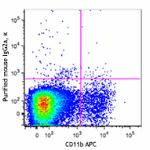
-
Alexa Fluor® 647 anti-mouse CX3CR1
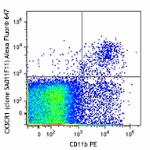
C57BL/6 mouse splenocytes were stained with CD11b PE and CX3... 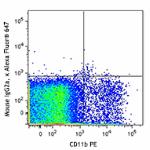
-
PE anti-mouse CX3CR1
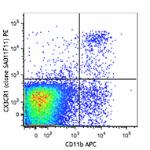
C57BL/6 mouse splenocytes were stained with CD11b APC and CX... 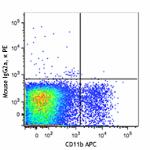
-
APC anti-mouse CX3CR1
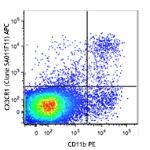
C57BL/6 mouse splenocytes were stained with CD11b PE and CX3... 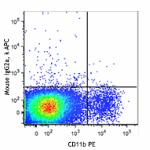
-
PerCP/Cyanine5.5 anti-mouse CX3CR1

C57BL/6 mouse splenocytes were stained with CD11b APC and CX... -
Brilliant Violet 421™ anti-mouse CX3CR1

C57BL/6 mouse splenocytes were stained with CD11b APC and CX... 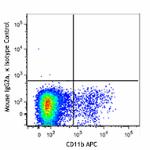
-
Brilliant Violet 510™ anti-mouse CX3CR1
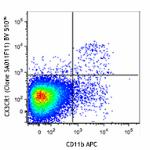
C57BL/6 mouse splenocytes were stained with CD11b APC and CX... 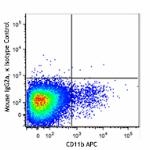
-
FITC anti-mouse CX3CR1
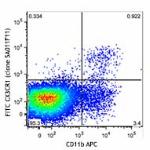
C57BL/6 mouse splenocytes were stained with CD11b APC and CX... 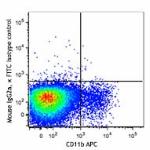
-
Alexa Fluor® 488 anti-mouse CX3CR1
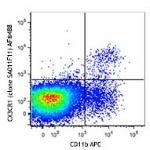
C57BL/6 mouse splenocytes were stained with CD11b APC and CX... 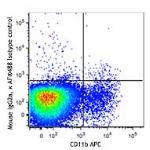
-
PE/Dazzle™ 594 anti-mouse CX3CR1
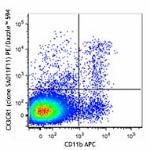
C57BL/6 mouse splenocytes were stained with CD11b APC and CX... 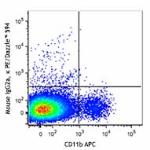
-
PE/Cyanine7 anti-mouse CX3CR1

C57BL/6 mouse splenocytes were stained with CD11b FITC and C... -
Biotin anti-mouse CX3CR1
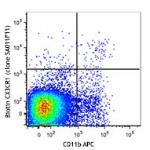
C57BL/6 mouse splenocytes were stained with CD11b APC and bi... 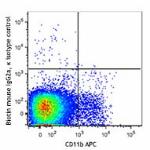
-
Brilliant Violet 605™ anti-mouse CX3CR1
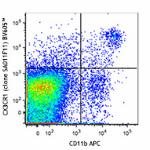
C57BL/6 mouse splenocytes were stained with CD11b APC and CX... 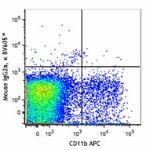
-
Brilliant Violet 785™ anti-mouse CX3CR1
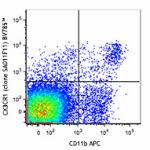
C57BL/6 mouse splenocytes were stained with CD11b APC and CX... 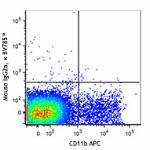
-
Brilliant Violet 711™ anti-mouse CX3CR1
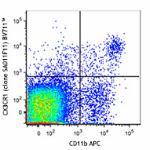
C57BL/6 mouse splenocytes were stained with CD11b APC and CX... 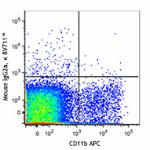
-
Brilliant Violet 650™ anti-mouse CX3CR1
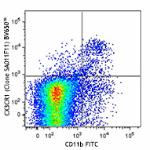
C57BL/6 mouse splenocytes were stained with CD11b FITC and C... 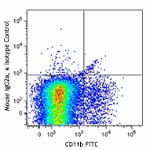
-
Alexa Fluor® 700 anti-mouse CX3CR1
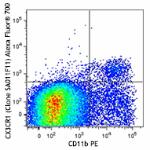
C57BL/6 mouse splenocytes were stained with CD11b PE and CX3... 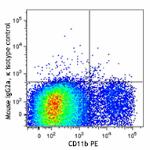
-
APC/Fire™ 750 anti-mouse CX3CR1

C57BL/6 mouse splenocytes were stained with CD11b FITC and C... 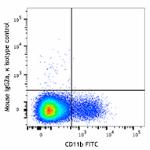
-
Pacific Blue™ anti-mouse CX3CR1

C57BL/6 mouse splenocytes were stained with CD11b FITC and C... 
-
TotalSeq™-A0563 anti-mouse CX3CR1
-
TotalSeq™-C0563 anti-mouse CX3CR1
-
TotalSeq™-B0563 anti-mouse CX3CR1
-
APC/Cyanine7 anti-mouse CX3CR1 Antibody

C57BL/6 mouse splenocytes were stained with anti-mouse CD11b... -
PE/Cyanine5 anti-mouse CX3CR1

C57BL/6 mouse splenocytes were stained with anti-mouse CD11b... -
PE/Fire™ 700 anti-mouse CX3CR1

C57BL/6 mouse splenocytes were stained with anti-mouse CD11b... -
APC/Fire™ 810 anti-mouse CX3CR1

C57BL/6 mouse splenocytes were stained with anti-mouse CD11b... -
PE/Fire™ 640 anti-mouse CX3CR1

C57BL/6 mouse splenocytes were stained with anti-mouse CD11b... -
PE/Fire™ 810 anti-mouse CX3CR1

C57BL/6 mouse splenocytes were stained with anti-mouse CD11b... -
PerCP/Fire™ 806 anti-mouse CX3CR1

C57BL/6 mouse splenocytes were stained with anti-mouse CD11b... -
Brilliant Violet 570™ anti-mouse CX3CR1

C57BL/6 mouse splenocytes were stained with anti-mouse/human... -
PerCP/Fire™ 780 anti-mouse CX3CR1

C57BL/6 splenocytes were stained with anti-mouse CD11b PE an... -
Spark Red™ 718 anti-mouse CX3CR1 (Flexi-Fluor™)
-
Spark PLUS UV395™ anti-mouse CX3CR1

C57BL/6 mouse splenocytes were stained with anti-mouse CD11b... -
Spark Blue™ 574 anti-mouse CX3CR1 (Flexi-Fluor™)
-
Spark Blue™ 550 anti-mouse CX3CR1 (Flexi-Fluor™)

 Login / Register
Login / Register 









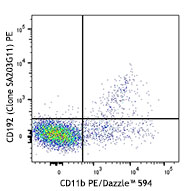
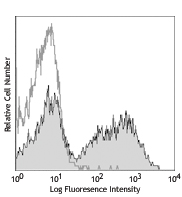

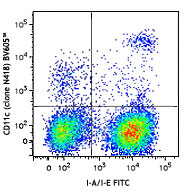



Follow Us